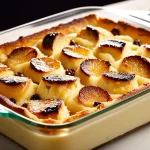Essential Home Insulation Methods in the UK
Choosing the best UK insulation methods depends heavily on your home’s structure and energy goals. For many UK houses, loft insulation is one of the most effective and accessible solutions. Materials like mineral wool and rigid foam boards are popular for their excellent thermal properties. Proper installation involves ensuring even coverage and airtight sealing to maximize heat retention.
Cavity wall insulation suits homes built with cavity walls, common in UK construction from the 1920s onward. This method fills the gap between the inner and outer walls with insulating material, such as beads or foam, reducing heat loss significantly. It’s crucial to assess wall suitability first, as some older homes might have solid walls or damp issues that complicate this approach.
Also read : What are the key considerations for renovating a UK period property?
When considering floor insulation, the choice often lies between suspended and solid floors. Suspended floors benefit from insulating below the floorboards to prevent cold air circulation, while solid floors require insulating layers above or below the concrete slab. Each type demands a different technique to ensure comfort and energy efficiency while avoiding moisture problems.
Understanding these home insulation types allows homeowners to make informed decisions tailored to their property, improving warmth and cutting energy costs effectively.
In parallel : How can you design a multifunctional living room in a UK house?
Pros and Cons of Insulation Types
Understanding insulation pros and cons is key when choosing the right material for your home. Different materials offer diverse benefits and limitations, affecting your home’s energy efficiency and comfort.
Fibreglass insulation, for example, is popular in the UK due to its affordability and effective thermal performance. It’s lightweight and easy to install but can irritate skin during handling and may lose effectiveness if compressed. Mineral wool is denser and offers excellent soundproofing alongside thermal insulation. It’s fire-resistant but tends to be heavier and pricier.
Foam board insulation stands out for its high R-value per inch, making it ideal in tight spaces. However, installation can be trickier since proper sealing is crucial to prevent air leaks, affecting long-term performance.
When comparing insulation materials in the UK, consider ease of installation and durability. Fibreglass and mineral wool typically require protective gear during installation, while foam boards demand precise fitting. In terms of maintenance, most insulation types perform well if kept dry and undisturbed. Long-term, quality insulation can significantly reduce heating bills and carbon footprint, highlighting the importance of selecting the right material based on your home’s specific needs.
Estimated Costs and Potential Savings
Understanding insulation costs UK is key for budgeting your home upgrade effectively. Material and installation prices typically range from £500 to over £3,000, depending on the type of insulation chosen and the property size. For example, cavity wall insulation is usually on the lower end, while full roof or floor insulation tends to be more expensive due to complexity.
When considering energy savings from insulation, most homeowners can expect a payback period of 3 to 7 years. This depends heavily on how well your property retains heat beforehand. After this period, annual energy savings can amount to hundreds of pounds — reducing heating bills by 15-30%. This not only cuts costs but also adds to your home’s comfort and environmental performance.
If you’re keen on insulating home on budget, factors such as easy loft access or straightforward wall structures can reduce installation costs. Conversely, older buildings or those with difficult-to-reach areas may increase complexity. Choosing the right insulation method tailored to your home’s specifics is essential for maximizing savings and minimizing upfront costs.
Navigating UK Regulations and Grants
Understanding UK insulation regulations is crucial for homeowners aiming to improve energy efficiency. Building projects must adhere to standards such as Part L of the Building Regulations, which sets minimum thermal performance requirements. Ensuring compliance involves using certified materials and following approved installation methods to avoid costly delays or penalties.
For those concerned about costs, various insulation grants UK programs offer financial support. Schemes like the Energy Company Obligation (ECO) provide subsidies for installing loft, cavity wall, and solid wall insulation. These grants make energy efficiency improvements more accessible and can significantly reduce upfront expenses.
To navigate the approval process smoothly, familiarize yourself with energy efficiency incentives and permitted works criteria. Certification from qualified professionals is often required to guarantee that installations meet regulatory standards. Early consultation with local authority building control can streamline approvals, preventing potential issues during inspections.
By aligning your project with UK insulation regulations and exploring available grants, you unlock both compliance and cost-saving benefits. This informed approach ensures enhanced home comfort while supporting national energy reduction goals.
DIY vs Professional Insulation: Making the Right Choice
Deciding between DIY insulation UK and seeking professional insulation advice hinges on the task complexity and your comfort level. For straightforward projects like insulating lofts or draught-proofing windows and doors, competent DIYers can save money while achieving good results. These tasks often require basic materials and simple tools, making them suitable for those with some practical skills.
However, when dealing with walls, cavity insulation, or using advanced materials such as spray foam or rigid boards, professional insulation advice is crucial. Experts understand current building regulations and can ensure installation meets safety standards. This is especially important in properties where incorrect insulation could lead to moisture problems or compromised structural integrity.
Safety considerations include handling materials that may require protective gear and awareness of potential hazards like asbestos or electrical wiring. Professionals provide quality assurance through guarantees, giving homeowners confidence in their investment. Following home insulation tips from trusted sources helps balance cost, efficiency, and safety when choosing between DIY insulation UK and professional services.
Insulating Windows and Doors for Maximum Efficiency
Enhancing window insulation UK standards is crucial for reducing heat loss and improving home comfort. Several options boost window thermal performance, such as secondary glazing, which adds an extra layer of glass, significantly cutting down on heat transfer. Alternatively, specially designed window films can reflect infrared heat back inside, while thick curtains provide additional insulation by reducing drafts.
When focusing on draught-proofing doors, practical measures include installing draught excluders along the bottom and letterbox brushes that seal gaps without obstructing mail delivery. Sealing gaps around door frames with adhesive seals blocks unwanted airflow, bolstering energy efficiency.
These insulation methods combined greatly amplify the benefits of double glazing benefits, which already provides excellent thermal performance by trapping air between glass panes. Adding door draught-proofing and window insulation components reduces energy waste, leading to lower heating bills and a cozier indoor environment. Using these strategies together maximises the impact on a home’s overall energy efficiency, helping UK households to stay warm sustainably.


